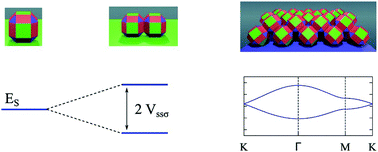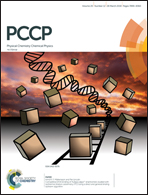Colloidal nanocrystals as LEGO® bricks for building electronic band structure models†
Abstract
The synthesis of self-assembled semiconductor nanocrystal (NC) superlattices using oriented attachment recently became a flourishing research topic. This technique already produced remarkable forms of NC superlattices, such as linear chains, mono and multilayer square lattices, and silicene-like honeycomb lattices. In the case of lead chalcogenide semiconductors where NCs are in the form of truncated nanocubes, the attachment mostly occurs via (100) facets. In this work, we show that all these structures can be seen as sub-structures of a simple cubic lattice. From this, we investigate a rich variety of one-dimensional or two-dimensional superlattices that could be built as few lines or few layers taken from the same cubic system following different crystallographic orientations. Each NC can be therefore considered as a LEGO® brick, and any superlattice can be obtained from another one by rearranging the bricks. Moreover, we show that this concept of LEGO® bricks can be extended to the calculation of the electronic band structure of the superlattices. This leads to a simple yet powerful way to build analytical Hamiltonians that present band structures in excellent agreement with more elaborate atomistic tight-binding calculations. This LEGO® concept could guide the synthesis of superlattices and LEGO® Hamiltonians should greatly simplify further studies on the (opto-)electronic properties of such structures.



 Please wait while we load your content...
Please wait while we load your content...